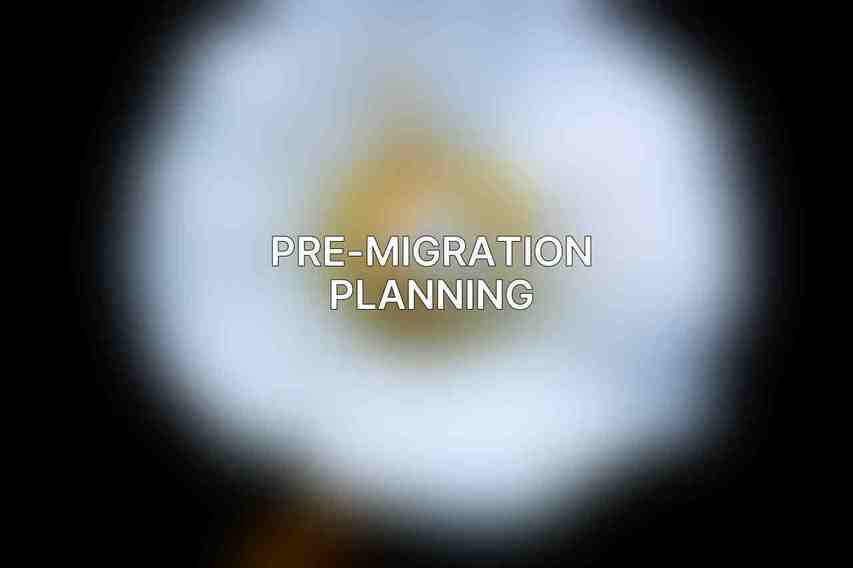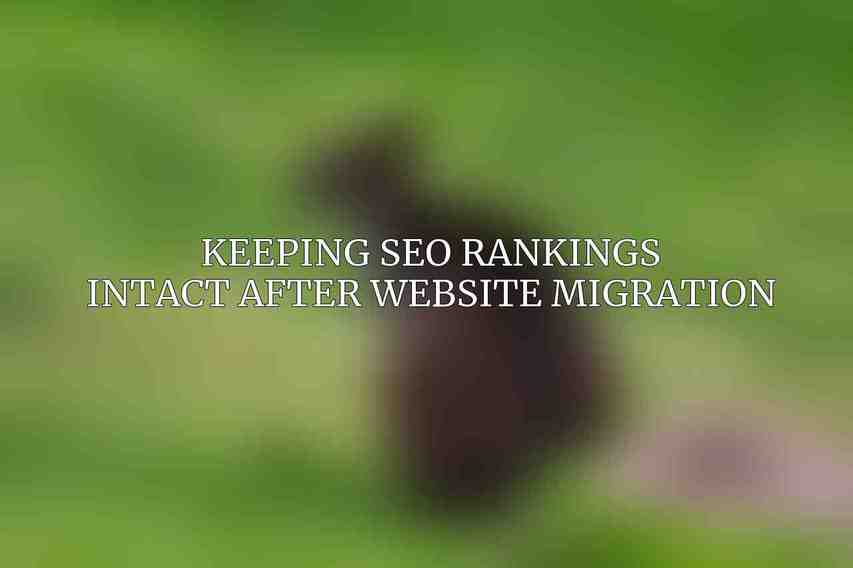The importance of maintaining SEO post-website migration cannot be overstated. When a website undergoes migration, whether it’s a platform change, domain switch, or a complete redesign, there is a significant risk of losing search engine rankings. The impact of migration on search engine rankings can result in a loss of organic traffic, which can have detrimental effects on the online visibility and profitability of a website. The objective of post-migration SEO maintenance is to mitigate these risks and ensure that the website retains or even improves its search engine rankings.
Pre-Migration Planning

Preparation is key to a successful website migration without compromising SEO rankings. Before migrating a website, it is crucial to conduct a comprehensive SEO audit to evaluate the current state of the website’s SEO. Mapping old URLs to their new counterparts is essential to ensure seamless redirection and prevent broken links. Implementing 301 redirects for all relevant pages helps preserve the SEO value of the old URLs and transfer it to the new ones. Updating sitemaps and submitting them to search engines informs search engine crawlers about the changes. Extensive testing of all critical website functionality ensures that the migration process will not negatively impact user experience.
Immediate Post-Migration Actions

After the migration is complete, it is imperative to monitor the website’s performance closely. Any technical issues that arise should be addressed promptly to prevent negative impacts on SEO rankings. Checking for broken links and redirecting any orphaned pages that may have been overlooked during the migration process is essential. Verifying that all redirects are correctly implemented and functioning as intended helps maintain a smooth user experience and prevents SEO penalties. Monitoring search engine consoles for any errors or warnings can provide valuable insights into potential issues that need to be addressed promptly.
Ongoing Post-Migration Maintenance
Content Updates:
Regularly updating the website with fresh, relevant content is crucial for maintaining and improving SEO rankings. Optimizing new content for target keywords ensures that the website remains competitive in search engine results. Removing outdated or duplicate content helps improve the overall quality and relevance of the website’s content, which can positively impact SEO performance.
Technical Maintenance:
Continuously monitoring and addressing technical issues such as broken links and slow loading times is vital for SEO maintenance. Implementing security measures to safeguard the website from hacking and malware threats is essential for maintaining user trust and search engine rankings. Ensuring that the website is mobile-responsive is critical, as mobile-friendliness is a key ranking factor for search engines.
Link Building:
Acquiring high-quality backlinks from authoritative websites can significantly boost the website’s SEO performance. Monitoring the backlink profile regularly and disavowing any suspicious or low-quality links helps maintain a healthy link profile, which is essential for SEO success.
Analytics and Reporting:
Tracking key SEO metrics such as rankings, traffic, and conversions is essential for evaluating the effectiveness of post-migration SEO efforts. Analyzing data to identify trends and areas for improvement allows for data-driven adjustments to the SEO strategy, ultimately leading to better SEO performance.
Common Pitfalls and How to Avoid Them
Avoiding common pitfalls during and after website migration is crucial to preserving SEO rankings.
Redirect Errors:
Using 301 redirects instead of temporary 302 redirects is vital to ensure that link equity is passed from old URLs to new ones. Thoroughly testing all redirects before making them live can help prevent potential issues with redirection chains or loops.
Content Loss:
Mapping all old URLs to new ones and implementing appropriate redirects ensures that valuable content is not lost during migration. Regularly checking for any missing or broken pages and promptly restoring them can prevent SEO penalties due to missing content.
Technical Issues:
Conducting extensive testing before migrating the website can help identify and address technical issues early on. Monitoring website performance post-migration and promptly addressing any issues that arise is essential for maintaining SEO rankings. Seeking professional help when needed can ensure that technical issues are resolved effectively.
Best Practices for Retaining Rankings
Maintaining SEO rankings post-website migration requires ongoing effort and attention to best practices. Dive deeper into The Ultimate Website Migration Checklist for a Smooth Transition
Communicate with Search Engines:
Submitting an updated sitemap and notifying search engines of the migration can help expedite the reindexing of the website’s new pages. Using tools like fetch as Google can help ensure that new pages are indexed quickly, aiding in maintaining SEO rankings.
Monitor Rankings Regularly:
Tracking changes in rankings and identifying any potential issues promptly allows for timely interventions to prevent further declines in SEO performance. Analyzing ranking data and making adjustments to the SEO strategy based on insights can help improve rankings over time.
Engage in Outreach:
Notifying important stakeholders such as backlinks and social media followers of the migration helps maintain link integrity and user engagement. Requesting updates or re-shares from stakeholders can help ensure that the website retains valuable backlinks and social signals.
post-migration SEO maintenance is crucial for preserving and improving website rankings after a migration. By following key strategies for ongoing maintenance and best practices for retaining rankings, website owners can mitigate the risks associated with migration and ensure a successful transition. Seeking professional assistance when necessary can provide expert guidance and support throughout the migration process, ultimately leading to a seamless and successful migration with minimal impact on SEO rankings.
Frequently Asked Questions
Why is it important to keep SEO rankings intact after website migration?
It is important to keep SEO rankings intact after website migration to maintain organic traffic and maintain visibility on search engines.
How can website migration impact SEO rankings?
Website migration can impact SEO rankings by causing technical issues, broken links, and losing valuable backlinks.
What steps can be taken to prevent SEO rankings from dropping during website migration?
To prevent SEO rankings from dropping during website migration, redirect old URLs to new ones, update sitemaps, and inform search engines of the website changes using tools like Google Search Console.
How long does it take for SEO rankings to stabilize after website migration?
SEO rankings can take anywhere from a few weeks to a few months to stabilize after website migration, depending on the size of the website and extent of changes made. Read more on Strategies to Minimize Downtime During Website Migration
What are some common mistakes to avoid during website migration to maintain SEO rankings?
Common mistakes to avoid during website migration include not redirecting URLs properly, forgetting to update internal links, and neglecting to test the new website for SEO issues before going live.

